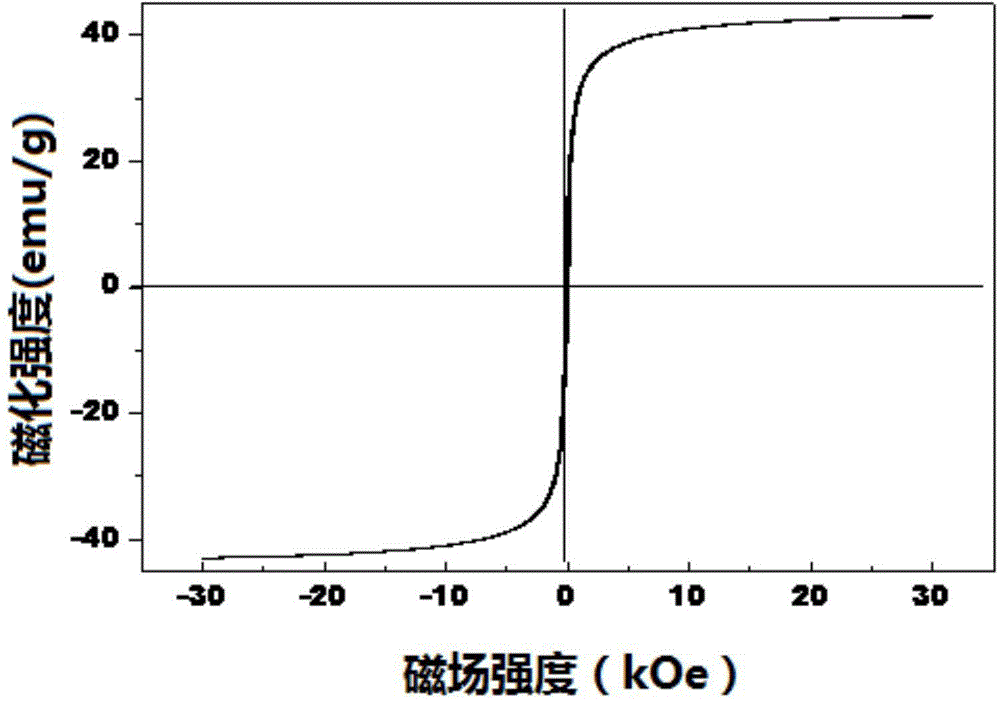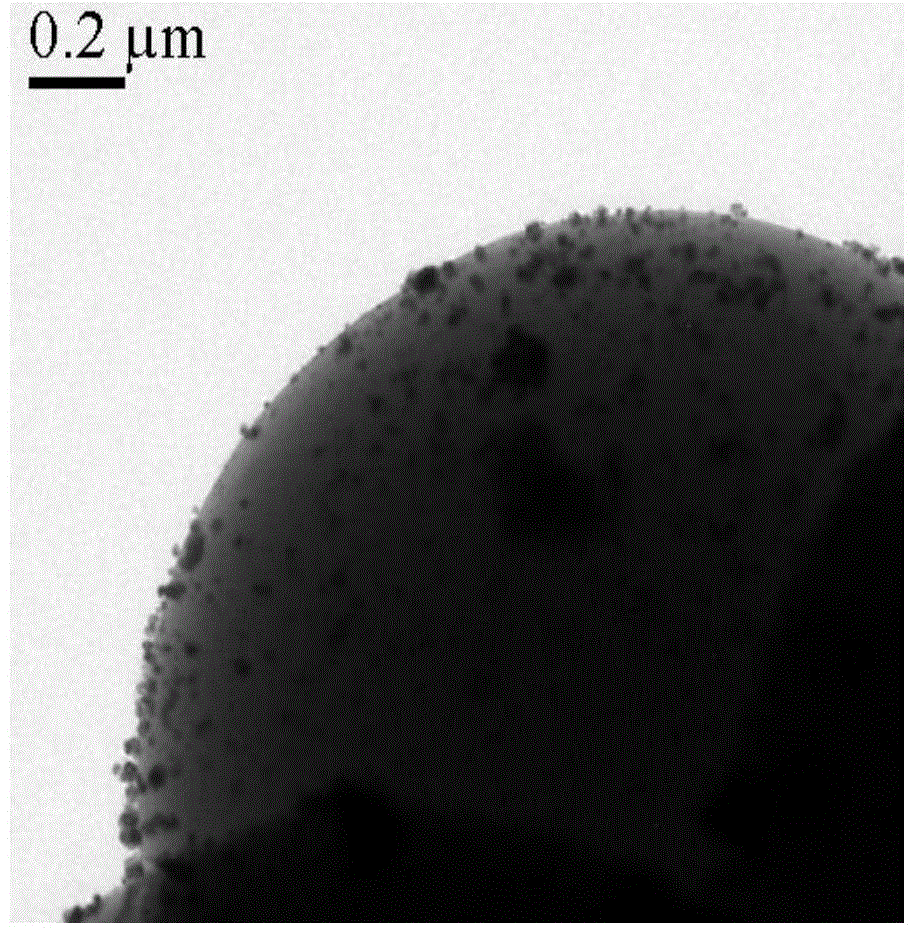Magnetic nanomaterial supported ruthenium catalyst and application of magnetic nanomaterial supported ruthenium catalyst in preparation of 2, 5-dimethylfuran by catalyzing 5-hydroxymethylfurfural
A technology of hydroxymethylfurfural and magnetic nanometers, which is applied in the preparation and application of new catalyst materials, can solve the problems of unfavorable large-scale production and inconvenient catalyst recovery, and achieve simple recovery and reuse, not easy to deactivate, and simple operation Effect
- Summary
- Abstract
- Description
- Claims
- Application Information
AI Technical Summary
Problems solved by technology
Method used
Image
Examples
Embodiment 1
[0036] A magnetic nanomaterial loaded with ruthenium (Fe 3 o 4 C-Ru) the preparation method of catalyst, its step is as follows:
[0037] 1. Fe 3 o 4 Preparation of nanomaterials: synthesized according to the method designed by Diao Guowang et al. (J Phys Chem C 2011; 115:18923-34.). 1.5g FeCl 3 ·6H 2 O. 1g of polyvinylpyrrolidone (average molecular weight 1300000) and 2g of sodium acetate were added to 30mL of ethylene glycol, stirred vigorously for 2h, then the resulting mixture was transferred to a polytetrafluoroethylene-lined stainless steel autoclave, and reacted at 200°C 8h, the resulting black precipitate was collected with a magnet, washed twice with ethanol, and then vacuum-dried at 60°C for 24h to obtain a black solid, namely Fe 3 o 4 nanomaterials.
[0038] 2. Fe 3 o 4 C Preparation of magnetic nanomaterials: synthesized according to the method designed by Li Shenghai et al. (Langmuir 2010; 26:6676-80.). Fe obtained in step 1 3 o 4 Nanomaterials immers...
Embodiment 2
[0041] Utilize the Fe prepared by embodiment 1 3 o 4 C-Ru Catalyst Hydrogenation Reduction of 5-Hydroxymethylfurfural to Prepare 2,5-Dimethylfuran:
[0042] With HMF (50.4mg), tetrahydrofuran (THF, 12mL) and the Fe prepared in Example 1 3 o 4 The C-Ru catalyst (65mg) was added into a 50mL stainless steel reaction kettle, and the air was replaced with hydrogen three times, and the resulting mixture was heated to 130° C. and stirred for 6 hours under a hydrogen pressure of 1 to 30 bar. Detected by high performance liquid chromatography, the HMF conversion rate and the resulting DMF yield are shown in the table below.
[0043] hydrogen pressure
[0044] 1 bar
Embodiment 3
[0045] The Fe of different ruthenium mass fractions of embodiment 3 3 o 4 Preparation and Catalytic Activity of C-Ru Catalyst
[0046] Fe with different ruthenium mass fractions 3 o 4 The preparation method of C-Ru catalyst is the same as embodiment 1, only changes RuCl in step 3 3 ·xH 2 The addition amount of O (2.5-25mg), can obtain the active component metal ruthenium mass percentage in 1%~10% Fe 3 o 4 C-Ru catalyst.
[0047] HMF (50.4mg), THF (12mL) and the above-mentioned ruthenium mass fraction are 1%~10% Fe 3 o 4 The C-Ru catalyst (65mg) was added into a 50mL stainless steel reaction kettle, and the air was replaced with hydrogen three times, and the resulting mixture was heated to 130° C. under 15 bar hydrogen pressure and stirred for 6 hours. Detected by high performance liquid chromatography, HMF conversion rate and gained DMF yield are as follows:
[0048] The mass fraction of Ru in the catalyst
[0049] 10%
PUM
 Login to View More
Login to View More Abstract
Description
Claims
Application Information
 Login to View More
Login to View More - Generate Ideas
- Intellectual Property
- Life Sciences
- Materials
- Tech Scout
- Unparalleled Data Quality
- Higher Quality Content
- 60% Fewer Hallucinations
Browse by: Latest US Patents, China's latest patents, Technical Efficacy Thesaurus, Application Domain, Technology Topic, Popular Technical Reports.
© 2025 PatSnap. All rights reserved.Legal|Privacy policy|Modern Slavery Act Transparency Statement|Sitemap|About US| Contact US: help@patsnap.com



